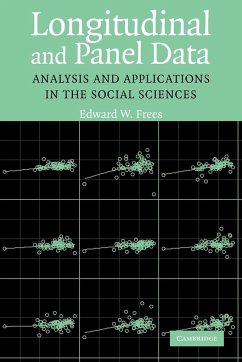
Panel Data
Versandkostenfrei!
Versandfertig in 6-10 Tagen
19,99 €
inkl. MwSt.

PAYBACK Punkte
10 °P sammeln!
High Quality Content by WIKIPEDIA articles! In statistics and econometrics, the term panel data refers to two-dimensional data. Data is broadly classified according to the number of dimensions. A data set containing observations on a single phenomenon observed over multiple time periods is called time series. In time series data, both the values and the ordering of the data points have meaning. A data set containing observations on multiple phenomena observed at a single point in time is called cross-sectional. In cross-sectional data sets, the values of the data points have meaning, but the o...
High Quality Content by WIKIPEDIA articles! In statistics and econometrics, the term panel data refers to two-dimensional data. Data is broadly classified according to the number of dimensions. A data set containing observations on a single phenomenon observed over multiple time periods is called time series. In time series data, both the values and the ordering of the data points have meaning. A data set containing observations on multiple phenomena observed at a single point in time is called cross-sectional. In cross-sectional data sets, the values of the data points have meaning, but the ordering of the data points does not. A data set containing observations on multiple phenomena observed over multiple time periods is called panel data. Panel Data aggregates all the individuals, and analyzes them in a period of time. Alternatively, the second dimension of data may be some entity other than time. For example, when there is a sample of groups, such as siblings or families, andseveral observations from every group, the data are panel data. Whereas time series and cross-sectional data are both one-dimensional, panel data sets are two-dimensional.












